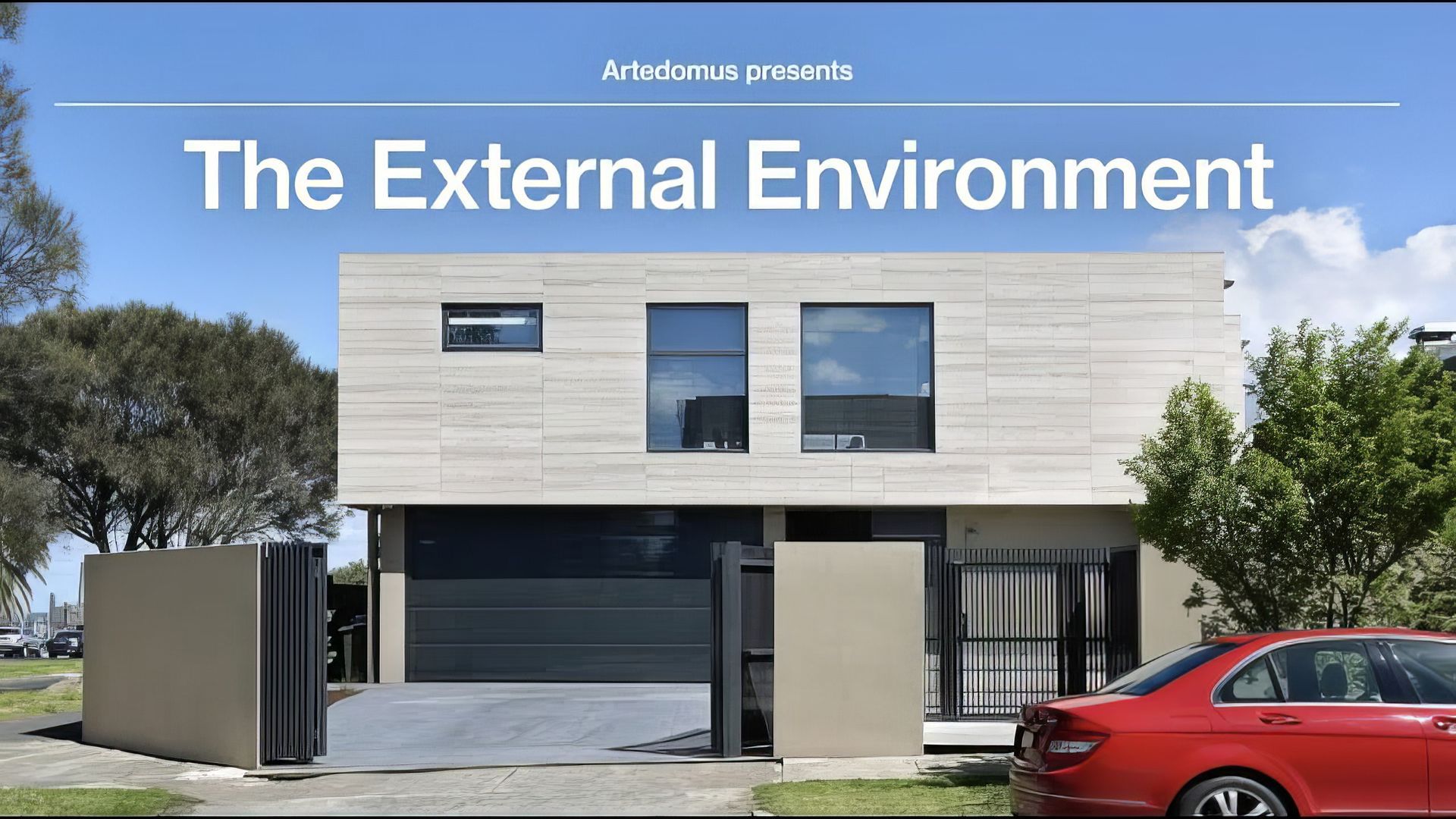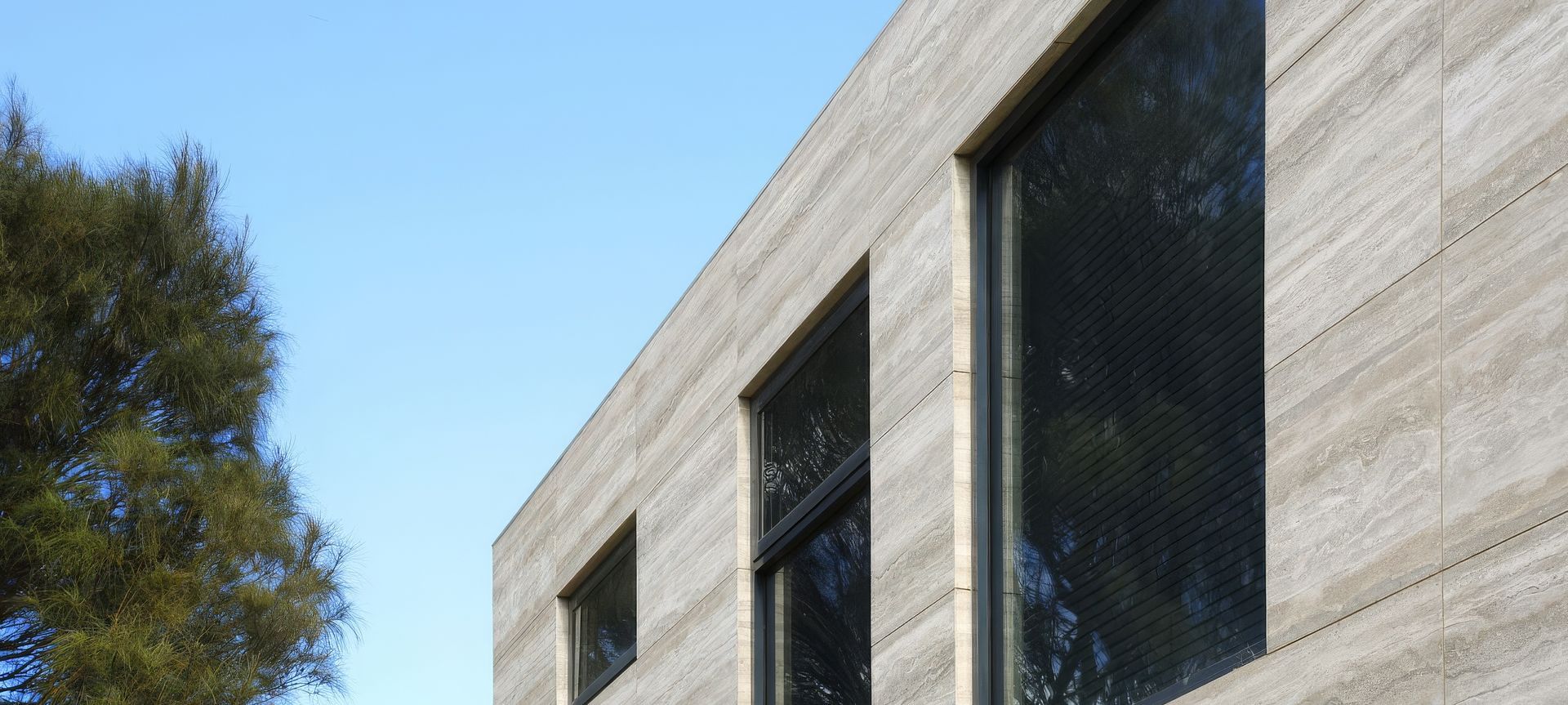External materials for the Australian environment
In Australia, our buildings are exposed to wind, rain, salt and fire. As we design and construct for this harsh environment, we need to think about how we best protect the buildings that protect us from these conditions. Architectural ceramics, porcelain panels and natural stone provide a strong and safe solution, offering enduring resistance, practicality and aesthetics.
Selecting an external material
Aesthetics and limitations, such as building height, will guide the selection of an external material. Limitations will influence the technical properties of the material selection, while the practical side of aesthetics should also be considered: how the material will perform over a long period of time. Artedomus’ range of architectural ceramics, porcelain panels and natural stone come in a variety of colours, textures and finishes that will aesthetically and functionally endure.

Architectural ceramics
INAX produces handmade porcelain tiles suitable for cladding façades. The company is based in Japan, which has a challenging building environment, most notably frequent earthquakes. One common solution in Japan is to clad concrete slabs with ceramic tiles, creating a building skin that’s much more durable than cement render and aluminium panels, and completely non-combustible.
Australian architects have taken to INAX ceramic tiles for their strength, durability and natural beauty. The long, slow baking process makes the tiles exceptionally hardwearing, and the glaze and colour sets them apart from other products on the market.
Many of the tiles have a brick-like feel or size, but they are far superior in aesthetics and performance. They have more texture, colour and glazing, and they are easy to install. That’s why the buildings along the streets of Tokyo and Nagoya have myriad of different colours and textures.
Artedomus collaborates with INAX and local architects to develop customised products for Australian projects that are suitable for the Australian environment and climates. We worked with INAX and John Wardle Architects for the 60,000 custom egg-shaped tiles that stud the precast concrete of the Melbourne Conservatorium of Music.
Porcelain panels
One of the biggest benefits of a large-format porcelain panel is its minimal joins, especially if you live near the sea where façades are exposed to salt from saline winds. Fired at 1300 degrees Celsius, porcelain panels are UV-stable, non-combustible and able to withstand harsh conditions. They are also durable and long-lasting while being a light surface for the outside of a building.
Add the Active 2.0 application and the façade is strong and good looking and will remain that way. Active 2.0 is a revolutionary photocatalytic surface that is antiviral, antipollution and anti-odour. Unlike the many surface materials that call themselves “antibacterial” but simply stop the spread of bacteria, MAXIMUM ACTIVE 2.0 kills bacteria, including E. Coli and MRSA and also kills viruses including COVID-19. It also severely degrades airborne pollutants, such as nitrogen oxide and all VOCs, and its self-cleaning properties ensure ease of maintenance.
Natural stone
Natural stone is a beautiful product for external applications, such as cladding, swimming pool surrounds and paving, but it’s important to choose a stone that is durable and able to be looked after and maintained.
Cotto Manetti terracotta is another excellent material that can be used as an engineered façade, cladding or paving.
Artedomus is an expert in exterior materials for the external environment. Our architectural ceramics, porcelain panels and natural stone provide a superior solution for residential, commercial and public buildings, and offer a broad range of colours, textures and distinctive effects.

